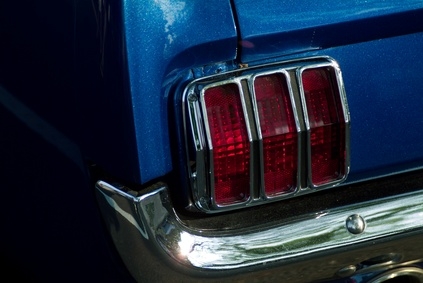
The 1965 Ford Mustang's starting system consists primarily of three components: the battery, the starter solenoid and the starter motor. When the Mustang's ignition key is turned, the starter solenoid allows the power from the battery to reach the starter motor, which then engages with the flywheel to turn the engine. Troubleshooting this starting system is fairly simple due to its basic design, and requires systematically checking each component to determine the cause of the problem.
Check the voltage of the battery with a volt meter. Attach the positive volt meter wire to the positive battery terminal, then attach the negative volt meter cable to the negative battery terminal. The volt meter should read approximately 12 to 15 volts of electricity. If the battery's voltage is lower than 12 volts, the battery may be defective.
Grasp each battery terminal clamp, one at a time, and attempt to wiggle the cable on the terminal. If the clamp is loose, tighten it with a wrench. Do not touch both battery terminal clamps at the same time; an electrical shock will result.
Trace the positive battery cable from the battery to the starter solenoid mounted next to the battery on the engine compartment. The cable slides onto a rod on the solenoid and is secured with a nut. Ensure that the nut is tight with a wrench.
Trace the negative battery cable from the battery to the engine block. This cable is secured to the block with a single bolt. Ensure that the bolt is tight with a wrench.
Ensure that the two bolts that secure the top of the starter solenoid are tight with a wrench. The solenoid does not use a ground wire. The metal backing of the solenoid operates as the ground point.
Attach one end of a heavy jumper cable to the large threaded rod on one side of the starter solenoid, then touch the opposite end of the jumper cable to the heavy threaded rod on the opposite of the starter solenoid. If the starter motor produces a sound, replace the starter solenoid. If the starter motor does not produce a sound, the cable which connects the starter solenoid to the starter motor may be loose.
Ensure that the cable which connects the starter solenoid to the side of the starter motor is secured to the starter motor tightly with a wrench. If the cable is tight, replace the starter motor.